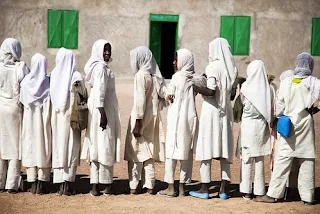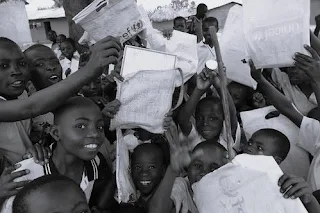West African Educational System Under French Colonies
French was a global language of education and commerce during the colonial era.
Former French colonies in West Africa include Senegal, Mali, Mauritania, Guinea, Côte d'Ivoire, Burkina Faso, Niger, Benin, Togo, Chad, Central African Republic, Gabon, Republic of the Congo, Democratic Republic of the Congo, Cameroon, and Madagascar. French influence, including the French language educational system, had a significant impact on the development of these nations.
Access to education was restricted, particularly for the indigenous populations. Schools were often concentrated in urban areas and only accessible to a small percentage of the population, mostly the children of the colonial elite and those who could afford it.
Even when schools were available and French was understood, there were financial barriers to education. The cost of tuition, uniforms, books, and other school-related expenses greatly burden families, especially those from low-income backgrounds. As a result, many indigenous families could not afford to send their children to school.
Using the French language as the primary medium of instruction created a language barrier for indigenous children who spoke local languages at home. French colonial policy often revolved around assimilating the local populations into French culture and values. Education was viewed as a means to achieve this assimilation. Teaching in the French language was seen as a way to familiarize the indigenous population with French culture and ways of life.
French was the administrative language of the colonial powers. Many indigenous children arrived at school with little to no knowledge of the French language. This hindered their ability to excel in school, as they had to learn in a foreign language. However, a French-speaking labor force was advantageous for the colonial powers as it facilitated communication in economic activities and labor management.
Using the French language allowed French colonial authorities to control the West African school curriculum. This control extended to textbooks, materials, and the content of education.
The French language barrier hindered effective communication between students and teachers in French colonies. Indigenous children who had questions or needed clarification on topics but expressing themselves in French was challenging or impossible. Learning in a foreign language placed an additional cognitive load on indigenous students. They had to constantly translate between their native language and French, making the learning process more mentally taxing.
The limited availability of education had lasting effects on people's ability to move up the social ladder. Those who couldn't access a good education often found themselves stuck in low-paying, manual jobs, which kept social and economic inequalities in place. This lack of educational opportunities became a barrier to improving indigenous populations' lives and opportunities, contributing to a cycle of inequality that persisted over time.
Importantly to French colonizers, teaching in French reinforced social hierarchies. It created a distinction between those who received a French education and those who did not, establishing an elite class that identified more closely with French culture and values. Even after gaining independence, many former colonies retained French as the language of instruction to maintain continuity in education systems.
Indigenous cultures and traditions often rely on language as a carrier of cultural knowledge, values, and stories. The dominance of the French language in education undermined the transmission of indigenous cultural heritage to younger generations. Cultural practices, languages, and customs began to erode as they were supplanted by French culture.






